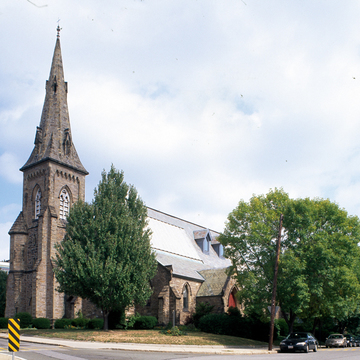Richard Upjohn's reputation for the design of Gothic country churches derives largely from projects like St. Paul's Episcopal Church in Brookline. Designed in 1848 and begun in 1851, this church represents the oldest surviving example in New England of Upjohn's masonry Gothic designs. Its simple Gothic detailing constructed of local Roxbury puddingstone
You are here
St. Paul's Episcopal Church and Rectory
1848–1852, Richard Upjohn. 104 Aspinwall Ave. 1866, Peabody and Stearns. 130 Aspinwall Ave.
If SAH Archipedia has been useful to you, please consider supporting it.
SAH Archipedia tells the story of the United States through its buildings, landscapes, and cities. This freely available resource empowers the public with authoritative knowledge that deepens their understanding and appreciation of the built environment. But the Society of Architectural Historians, which created SAH Archipedia with University of Virginia Press, needs your support to maintain the high-caliber research, writing, photography, cartography, editing, design, and programming that make SAH Archipedia a trusted online resource available to all who value the history of place, heritage tourism, and learning.






